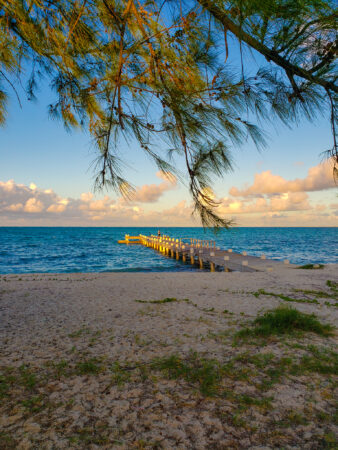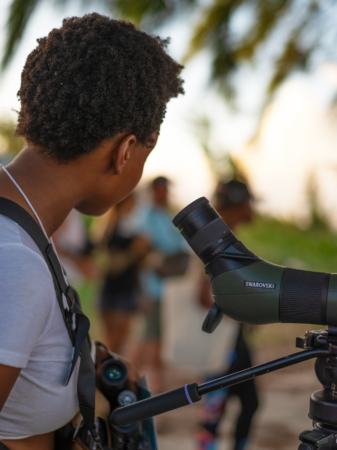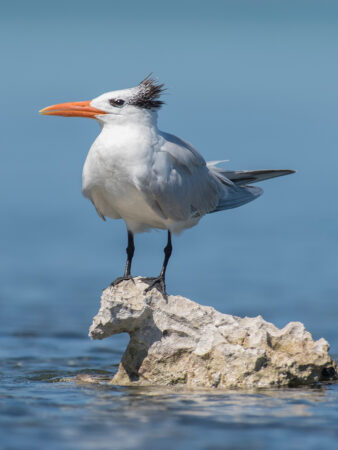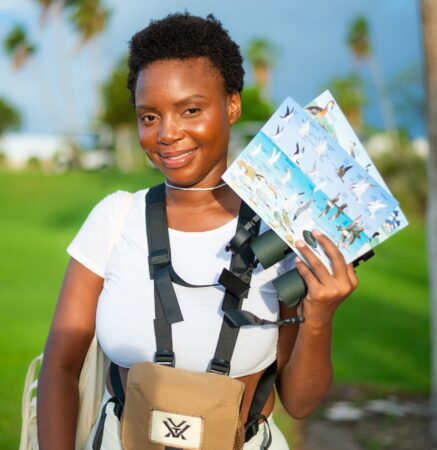
The Caribbean Birding Trail (CBT) primarily targets Caribbean tour guides in its mission to reimagine the tourism model across our islands; however, we recognize that this critical work must happen in concert with changes in the entire ecosystem that surrounds tourism—greater awareness by the public of our biodiverse treasures, coupled with a better understanding of the threats they face, leads to greater advocacy by communities. We respect the fundamental role that local journalists must play in keeping our communities informed and educated about the complex issues surrounding environmental and natural resource protection. Multifaceted and passionate journalist Easher Parker joined us at our Caribbean Birding Trail Turks and Caicos Islands workshop. For her, CBT was an eye-opening experience that further fueled her mission to inspire change that honors our environment—read on for her intriguing account.
Unexpected Beginnings
My Caribbean Birding Trail Guide Training turned out quite different from what I expected. Stick with me—this story has a beautiful ending. Let’s start with how I ended up participating in the first place.
I’m a journalist who loves covering the local environment and relevant laws and policies. My early love for the outdoors sprouted in Blue Hills, a historically rich community where nature was my literal playground. Growing up, my brother, cousins, friends, and I were always outdoors—climbing trees, chasing “yellow-belly birds,” and skipping rocks, a challenge that defied the laws of physics, trying to make stones bounce across ponds or seas.
Sometimes, I playfully tell visitors that I experienced the best of Turks and Caicos because it was an untapped paradise. Little did I know that I would one day join my community in the fight to protect it. As a journalist, my mission is to use my platform to enlighten minds and inspire change that respects and honors our environment. I aim to help as many as I can reconnect with her and experience the natural bliss I’m fortunate to still enjoy.
When the digital flier for The Caribbean Bird Trail Workshop appeared on my Facebook, I envisioned writing a report about another activity on Providenciales. Upon inquiry, I discovered it was more than just another ordinary event.
The project had been in the making for years, and this knowledge piqued my curiosity even more. In my quest for information, my friends at the Turks and Caicos National Trust suggested I sign up. It was one of the best decisions I ever made. The workshop completely changed my life.
Can you believe I never knew the common or scientific names of what I was seeing as a child up until the bird trailing workshop? The invaluable information provided clicked for me in such a way that felt like the missing piece of a puzzle. I went in oblivious to the ecology of the feathered friends from my childhood and walked away confident in the skills, knowledge, and experience I acquired.
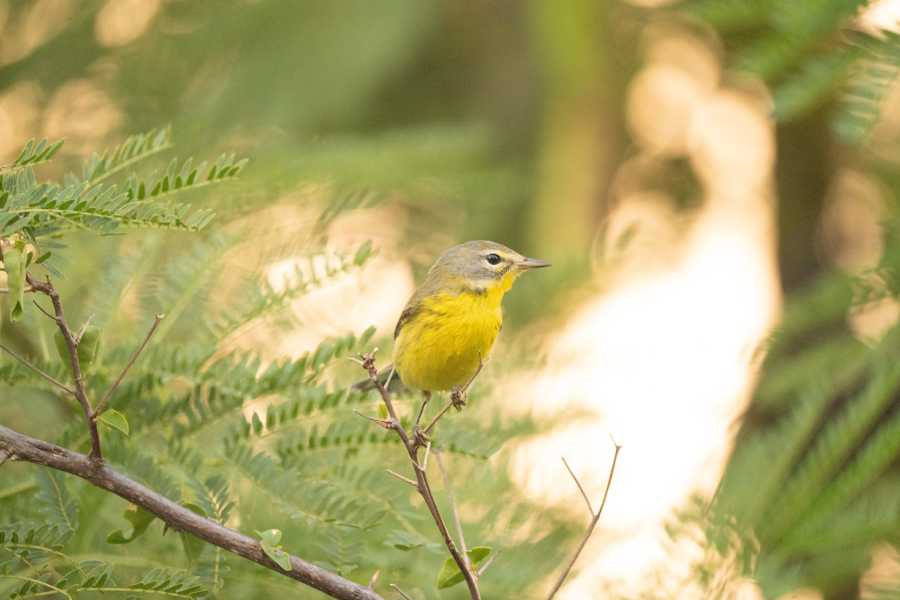
An Immersive Learning Journey
I spent an incredible five days with a diverse crew—naturalists, ecologists, boat captains, entrepreneurs, government folks, and avid conservationists. Our headquarters was the conference room at the Department of Environment and Coastal Resources, where we kicked off with a nail-biting evaluation. We met Adrianne G. Tossas, President of BirdsCaribbean, Avian Ecologist and professor of Biology; facilitator Lisa Sorenson, the Executive Director of Birds Caribbean; Venicio “Beny” Wilson Altamiranda, Naturalist-Tour Guide, and Certified Interpretive Trainer; Rick Morales, Owner of Jungle Treks and Certified Interpretive Trainer; Holly Robertson, the Project Manager of The Caribbean Bird Trail Project; and Christel Mohammed, the Communications Manager of Birds Caribbean.
Winema Penn, the Executive Director of TC National Trust, set the tone with a warm smile and brief opening remarks. We introduced ourselves, shared our expectations, and were gifted a carefully curated starter kit that included Vortex binoculars, a field guide, a top-tier poster featuring water birds, and more. Then we dove into the good stuff: bird identification, binocular wizardry, and guiding hacks.
Overall, our first session was a blast and fully engaging from start to finish. We capped the day at the famous Blue Hills jetty and Wheeland Pond, where Yellow-crowned Night-Herons, Black-necked Stilts, White-cheeked Pintails, Greater Yellowlegs, and Ruddy Turnstones stole the show.
Day two cranked up the excitement. We explored enhancing visitor experiences, birding ethics, and optimal positioning for inclusive tours. Simon Busittil wowed us with habitats, birding sites, and TCI’s conservation issues. I was stunned to learn that Caribbean birds have declined in population by 70% and that only eleven thousand Reddish Egrets are believed to be in existence as of this post.
On the flipside, Bryan Naqqi Manco had us hooked with a quirky presentation on TCI’s Endemic wildlife. Meanwhile, tools like eBird Caribbean and Merlin became our new besties. Lisa threw a virtual birding quiz challenge, and Beny took us deep into waterbirds and seabirds. Holly and the entire group delved into birding sites, and we wrapped up the day in the field at Kimcha Village.
Midweek, we rose with the sun for a magical trip to Bird Rock Point. Wild sapodilla, frangipani, native orchids, and fragrant trees surrounded us. Warblers and other species forced us into stillness along the trail. Back at home base, Holly unveiled the Caribbean Birding Trail Framework, and Rick delved into the Principles of Interpretation*. We pondered tangibles and intangibles in bird guiding, discussed audience styles, and explored different learning approaches. Then came independent guiding businesses, a virtual birding quiz, and more hands-on practice during a trip to Cheshire Hall Plantation.
We were back at it with an early-morning exploration of lush habitats, identifying birds, and honing guiding techniques. Along the way, we were greeted by Prairie Warblers among a list of water-bird species. Later that day Rick continued his communication mastery, sharing examples of stellar interpretation. We dedicated the remainder of the afternoon to creating eight-minute presentations for our final session, where we put our bird-guiding finesse into action.
Once again, we had to be up early and out in the field. At this point, it’s Friday. We presented a majority of our creative ideas at Wheeland Pond and wrapped up at The DECR. While there we celebrated stand-outs in the group, took a knowledge acquisition exam, and ended with a fun bird identification competition. I was on the winning team, of course. Such an awesome week concluded with the presentation of certificates and final moments of hugs, goodbyes, and establishing lifelong connections.
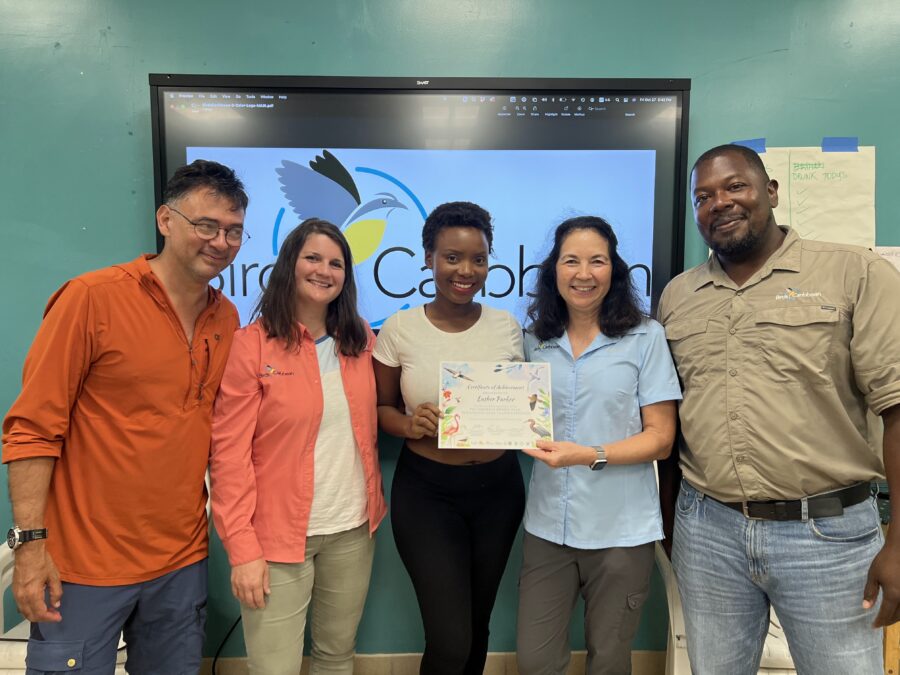
The Transformative Impact and Future Endeavors
Since completing the workshop, I’ve been excited to get up every day and go birding. I’ve even taken children out to Wheeland Pond. So far, Mother Nature has placed some pretty cool species on my path—the all-white juvenile Little Blue Heron, a stunning Least Bittern, the Reddish Egret, and a very elegant Yellow-billed Cuckoo. With practice, I’ve become more advanced in identifying not only a species but also its gender, age, and phase. My new philosophy has been especially helpful and it’s this: there’s always a bird in front of you, just be patient.
Overall, the Caribbean Birding Trail Guide Training ignited a fresh perspective within me, one that I’m eager to share with a broader audience, especially on social media, where the majority currently engages with content. My plan is to present statistics and research, captivating photos, engaging videos, and other forms of digital media. I aim to shed light on critical issues, such as the alarming decline and potential extinction of more Caribbean bird species. Equipped with the skills and knowledge acquired, I aspire to influence changes in laws and policies, advocating for the protection, conservation, and preservation of Caribbean birds and their natural habitats locally and maybe even regionally.
The impact of everyone involved, including fellow participants who have become friends, has been monumental in steering my life in a positive and meaningful direction. A special acknowledgment goes to the generosity and support of our sponsors—Sandals Foundation, Darwin Plus, Turks and Caicos National Trust, Royal Society for the Protection of Birds, Department of Environmental and Coastal Resources, Marshall Reynolds Foundation, Vortex Optics, and Shika Shika.
Here’s to a future where each bird tells a story, and together, we ensure those stories are heard for generations to come.
Easher Parker is a multifaceted advocate for Mother Nature whose passion for the outdoors transcends personal fulfillment. She seamlessly wears the hats of a naturalist, spiritualist, and journalist. With creativity as her compass and a digital creator’s platform as her megaphone, she’s on a mission to make the world fall head over heels for the wonders of the wild. Connect with her at www.easherparker.com.
Acknowledgements: The CBT Interpretive Guide Training was made possible through the generous support of our sponsors and local partners. These include the Sandals Foundation, the Turks and Caicos National Trust, Darwin Plus Initiative, the Turks and Caicos Department of Environment and Coastal Resources, the Royal Society for the Protection of Birds, Marshall Reynolds Foundation, Shika Shika, US Forest Service International Programs, and Vortex Optics.
The TCI CBT Interpretive Guide training is the seventh training to be carried out by BirdsCaribbean. Previous trainings have been held in Grenada, Jamaica, Dominican Republic, Bonaire, Cuba, and St. Vincent and the Grenadines. These guide trainings are integral to advancing the vision of the CBT—connecting people to the extraordinary places, diverse cultures, and people of each island. Through the CBT, we promote natural and authentic experiences that benefit local people and encourage the protection of the Caribbean’s natural resources, including birds and their habitats.
*Interpretation is a purposeful approach to communication that facilitates meaningful, relevant, and inclusive experiences that deepen understanding, broaden perspectives, and inspire engagement with the world around us. (National Association of Interpretation).
DOWNLOAD A FREE CHECKLIST OF THE BIRDS OF TURKS AND CAICOS ISLANDS AND PLAN A BIRDING TRIP TODAY!

